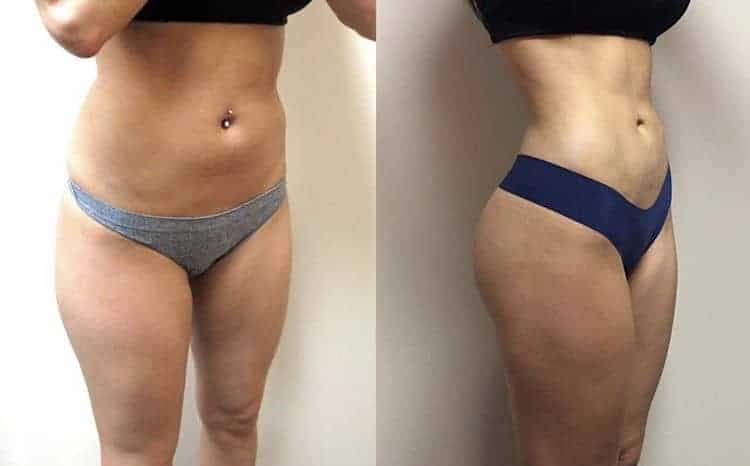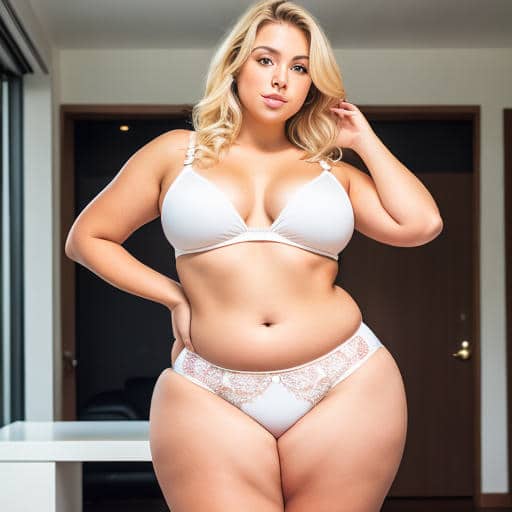Scarless Fat Reduction Options: Your Guide to Effective Techniques
Finding effective ways to reduce fat without scars, such as liposuction success or regular liposuction, is a game-changer in the weight loss procedure and lipolysis. Scarless fat reduction options, such as lipolysis and deoxycholic acid treatments, are gaining popularity for their minimal downtime and impressive results. Techniques like CoolSculpting, laser treatments, and fat removal procedures target stubborn areas, helping you achieve that sleek look without invasive surgery using cosmetic fat reduction technology. These fat reduction treatment options are not only safe but also provide long-lasting effects through nonsurgical fat reduction treatment and other fat removal techniques. You can say goodbye to those pesky love handles or muffin tops with fat reduction treatment or fat reduction options without the worry of scars. Whether you’re prepping for summer or just want to feel more confident in your skin, these options offer a fresh approach. Explore how these innovative fat reduction options can transform your body and boost your confidence.
Understanding Non-Surgical Fat Reduction
Definition
Non-surgical fat reduction involves various nonsurgical fat reduction treatments aimed at reducing unwanted fat. These procedures help people achieve their desired body shape through fat reduction options without the need for invasive surgery. They are designed to target stubborn fat that does not respond to diet and exercise.
Targeting Stubborn Fat
These procedures focus on specific areas of the body where fat tends to accumulate. Common areas include the abdomen, thighs, and love handles. Techniques like cryolipolysis freeze fat cells, while ultrasound therapy uses sound waves to break them down. These methods effectively destroy fat cells, which the body then naturally eliminates over time.
Fat grafting is another option, though it differs slightly. This technique involves removing fat from one area of the body and injecting it into another. It can enhance volume in places like the face or breasts while simultaneously reducing fat in unwanted areas.
Non-Invasive Nature
The non-invasive nature of these treatments makes them appealing. Patients can often return to normal activities shortly after the procedure. Most nonsurgical options require little to no downtime, unlike traditional weight loss procedures that may involve longer recovery periods.
Many patients appreciate that these treatments do not require anesthesia or large incisions. Instead, they may feel mild discomfort during the process, but this usually resolves quickly.
Benefits
- Minimal Downtime: Many patients can resume daily activities immediately.
- No Anesthesia Required: Most procedures do not require sedation.
- Targeted Results: Focus on specific trouble spots for more effective results.
- Natural-Looking Outcomes: Gradual fat reduction leads to a natural appearance.
Considerations
While nonsurgical fat reduction treatments are generally safe, they are not suitable for everyone. Individuals with significant weight issues might need to consider other options first. Consulting with a medical professional is essential before deciding on a treatment plan.
Benefits of Non-Surgical Fat Reduction
No Surgery Required
Non-surgical fat reduction offers a significant advantage. Patients do not undergo invasive procedures. This means no anesthesia, incisions, or long recovery times. Many people prefer this option due to its simplicity. The treatment typically involves techniques like cryolipolysis or ultrasound. These methods target fat cells without harming the skin.
Patients can often return to daily activities immediately after treatment. This lack of downtime makes it appealing for busy individuals. They can fit appointments into their schedules without major disruptions.
Body Contouring Enhancement
Enhancing body contour is another key benefit. Non-surgical fat reduction can reshape areas like the abdomen, thighs, and arms. Targeted treatments help to sculpt the body. Many patients see noticeable changes after just one session.
Results vary based on individual factors. Some may need multiple sessions for desired outcomes. However, improvements in appearance can boost confidence. People often feel more comfortable in their bodies, leading to a positive self-image.
Safety and Effectiveness
Safety is a crucial factor in any medical procedure. Non-surgical fat reduction methods are generally safe. The FDA has cleared many of these techniques for public use. This approval indicates a level of effectiveness and safety.
Clinical studies support these claims, showing successful fat loss results in numerous patients. Most side effects are mild and temporary, such as redness or swelling at the treatment site. Serious complications are rare.
Patients should consult with qualified professionals before starting treatment. They can discuss personal health histories and specific goals during consultations. This ensures that each person receives tailored advice.
Long-Lasting Results
Many people worry about the longevity of results from non-surgical options. Fat cells destroyed during treatment do not regenerate easily. As a result, patients can enjoy lasting changes if they maintain a healthy lifestyle.
Healthy eating and regular exercise contribute to sustaining results long-term. Non-surgical fat reduction encourages individuals to adopt better habits as part of their journey.
Cost-Effectiveness
Cost is an important consideration for many patients. Non-surgical fat reduction often costs less than surgical options like liposuction. This affordability makes it accessible to a broader range of individuals.
Insurance may not cover these procedures since they are cosmetic in nature. However, many clinics offer financing plans to ease financial burdens.
Limitations of Non-Surgical Methods
Minimal Sculpting Ability
Non-surgical fat reduction methods have limitations. Their sculpting ability is often minimal when compared to surgical options. Procedures like CoolSculpting or SculpSure target specific areas but do not produce the same dramatic changes as liposuction. Patients may notice some improvement, but it often falls short of their expectations.
These treatments work by freezing or heating fat cells. They can help reduce small pockets of fat. However, they cannot provide the same level of contouring that invasive treatments can achieve. For individuals seeking significant body reshaping, surgical methods remain the more effective choice.
Multiple Treatments Required
Achieving desired results often requires multiple sessions. Many patients expect quick fixes after a single treatment. This expectation can lead to disappointment. Most non-surgical procedures necessitate a series of appointments spaced weeks apart for optimal outcomes.
For example, a patient might need two to four sessions of CoolSculpting to see noticeable results. Each session targets specific areas, and the full effect may take several months to manifest. This timeline can be frustrating for those looking for immediate changes.
Not for Significant Weight Loss
These procedures are not designed for significant weight loss. Non-surgical fat reduction primarily targets stubborn fat pockets rather than overall body weight. Individuals with larger amounts of excess weight should consider other options.
Weight loss through diet and exercise remains essential before considering these treatments. Non-surgical methods are best suited for those near their goal weight who want to refine their bodies. Relying solely on these procedures for major weight loss can lead to unmet expectations.
Patient Considerations
Patients should have realistic expectations before undergoing non-surgical fat reduction methods. Understanding the limitations is crucial for satisfaction with the results. Consulting with a qualified professional helps clarify what these procedures can achieve.
Discussing goals and concerns with a healthcare provider allows patients to make informed decisions. They can assess individual needs and recommend suitable options based on specific circumstances.
Popular Non-Surgical Techniques
Cryolipolysis (CoolSculpting)
Cryolipolysis uses extreme cold to dismantle fat cells. The process involves placing a device on the skin that cools the underlying fat. This controlled cooling destroys fat cells without harming the skin. As a result, this technique provides targeted fat reduction in specific areas. Patients appreciate its non-invasive nature, which means no needles or incisions are involved.
This method is effective for areas such as the abdomen and thighs. Many people see noticeable results within weeks. It is important to note that while it reduces fat, it may not be suitable for everyone. Consulting with a professional helps determine if it’s the right choice.
Laser Treatment (SculpSure)
Laser treatment employs laser technology to heat and eliminate fat cells. This procedure targets specific fat pockets with precision. The heat disrupts the fat cells, leading to their gradual removal by the body.
Patients enjoy quick recovery times and minimal discomfort during and after treatment. SculpSure can treat various areas, including the abdomen and love handles. Many individuals prefer this option due to its efficiency and effectiveness.
Injectable Deoxycholic Acid (Kybella)
Kybella works by dissolving fat cells in targeted areas. This injectable treatment is commonly used under the chin, addressing submental fullness. It contains deoxycholic acid, which naturally occurs in the body to break down fats.
Results appear gradually over multiple sessions, allowing for a natural look. Patients often appreciate how this treatment can enhance their facial profile without surgery. This non-surgical body treatment offers an appealing alternative to cosmetic procedures like liposuction.
Ultrasound Fat Reduction
Ultrasound fat reduction utilizes ultrasound waves to target and break down fat cells. The procedure is non-invasive and can treat larger areas of fat effectively.
This method works by sending sound waves into the skin, disrupting fat cell membranes. Patients benefit from its ability to treat stubborn areas without downtime. Many find this technique suitable for their body contouring needs.
Red Light Therapy
Red light therapy stimulates fat cell reduction through low-level light exposure. This technique also promotes skin rejuvenation alongside fat loss benefits.
Patients enjoy a pain-free experience during treatment sessions. It feels relaxing and can be incorporated into wellness routines easily. As a non-invasive option, red light therapy appeals to those seeking gentle methods for body improvement.
Comparing Non-Surgical and Surgical Methods
Invasiveness and Recovery
Non-surgical methods generally involve minimal invasiveness. Techniques like CoolSculpting or laser therapy require no incisions. Patients can often return to daily activities right after the procedure.
Surgical options, like liposuction, are more invasive. They require anesthesia and incisions in the skin. Recovery times can vary but often take several weeks. Patients may experience swelling and bruising during this period. A surgeon typically provides specific recovery guidelines based on the individual’s health.
Results and Sculpting
Non-surgical fat reduction offers gradual results. Patients usually see changes over weeks or months as the body eliminates fat cells. While effective for small areas, these methods may not provide significant sculpting.
Surgical treatment provides immediate and more dramatic results. Liposuction can remove larger amounts of fat in one session. This option allows for greater body contouring and sculpting capabilities. Many patients achieve their desired look faster with surgical alternatives.
Cost and Accessibility
Cost differences between these methods are notable. Non-surgical options often range from $2,000 to $4,000 per session. Multiple sessions may be necessary for optimal results, increasing overall costs.
Surgical body procedures can be more expensive upfront. Liposuction costs can start at $3,500 and go up significantly based on the area treated. However, many patients find they need fewer follow-up visits compared to non-surgical techniques.
Accessibility also varies between methods. Non-surgical treatments are widely available in clinics and spas. Many people find it easier to schedule these appointments due to their flexibility.
Surgical options require a qualified surgeon and a surgical facility. Finding a reputable surgeon is crucial for safety and effectiveness. Researching credentials and patient reviews is important before deciding on surgical treatment.
Summary
Both non-surgical and surgical fat reduction methods have their pros and cons. Non-surgical options offer convenience with less downtime but may lack dramatic results. Surgical alternatives provide immediate changes but require more recovery time and higher costs.
Understanding these differences helps individuals make informed choices about their body goals. Each method has unique benefits that cater to different needs and preferences.
Ideal Candidates for Non-Surgical Treatments
Stubborn Fat
Individuals with stubborn fat pockets often seek nonsurgical treatments. These areas may not respond to diet and exercise. Common spots include the abdomen, thighs, and arms. Many patients feel frustrated when traditional methods fail. They look for alternatives that can help them achieve their body goals without surgery.

Minor to Moderate Reduction
Those seeking minor to moderate fat reduction benefit most from these options. Nonsurgical treatments can effectively target small amounts of fat. Patients often desire a subtle change rather than dramatic results. This approach provides a way to enhance appearance while avoiding the risks associated with surgical procedures.
Healthy Lifestyle Importance
Maintaining a healthy lifestyle is crucial for lasting results. Nonsurgical treatments can provide immediate improvements. However, they do not replace the need for regular exercise and a balanced diet. Patients must commit to healthy habits to maximize their outcomes. A sustainable approach helps ensure that results last over time.
Patient Considerations
Patients should consider their overall health before undergoing any treatment. Those with certain medical conditions may not be ideal candidates for nonsurgical options. Consulting with a qualified professional is essential. A surgeon near you can provide guidance based on individual circumstances.
Treatment Areas
Specific treatment areas are more suited for nonsurgical options. Common areas include:
- Abdomen
- Thighs
- Arms
- Back
- Chin
These locations often respond well to various cosmetic enhancement treatments.
Consultation Process
The consultation process plays a vital role in determining candidacy. Surgeons evaluate patients’ goals and expectations during this stage. They also assess skin quality and fat distribution. This assessment helps identify the most suitable treatment plan.
Choosing a Qualified Provider
Importance of Consultation
Consulting with a certified cosmetic surgeon is crucial. This step ensures safety and efficacy in any fat reduction option. A qualified provider understands individual needs and can recommend the best procedures. They will assess your health history and discuss realistic expectations. This conversation helps set achievable goals.
Checking Experience
Experience matters when selecting a provider. Look for someone who specializes in non-surgical fat reduction options. Check how many procedures they have performed. A skilled practitioner has likely encountered various cases, leading to better outcomes.
Reviews and Photos
Before making a decision, review feedback from past patients. Look for testimonials that highlight their experiences. Patients often share details about their satisfaction with results and the overall process.
Before-and-after photos are also valuable. They provide a visual representation of the provider’s work. These images help you understand what to expect from the procedure.
Understanding Options
Different fat reduction options exist, including CoolSculpting and SculpSure. Each has unique benefits and limitations. A qualified provider will explain these choices during your consultation. They will guide you based on your specific areas of concern.
Setting Realistic Expectations
Setting realistic expectations is important for satisfaction. Understand that results vary by individual and procedure type. Some may see changes within weeks, while others take longer to notice effects. Discuss these timelines with your provider to avoid disappointment.
Scheduling Your Consultation
Scheduling a consultation should be straightforward. Most providers offer online booking or phone appointments. Use this time to ask questions about the procedure, recovery, and costs involved.
Evaluating the Provider
Evaluate potential providers carefully. Check their credentials and certifications to ensure they meet industry standards. Look for affiliations with recognized organizations like the American Board of Cosmetic Surgery (ABCS). These memberships indicate a commitment to quality care.
Making an Informed Decision
Making an informed decision requires thorough research. Gather as much information as possible about each provider’s background and patient outcomes. This diligence can lead to a more satisfying experience.
Closing Thoughts
Scarless fat reduction options offer a game-changing approach to body contouring. You can enjoy the benefits of non-surgical methods, such as minimal downtime and fewer risks. Understanding your choices empowers you to make informed decisions.
Choosing the right provider is crucial for achieving your desired results. Research qualified professionals who can guide you through the process. Don’t wait to take action—explore these innovative treatments today and discover how they can enhance your confidence and well-being. Your journey to a better you starts now!
Frequently Asked Questions
What is non-surgical fat reduction?
Non-surgical fat reduction refers to techniques that eliminate fat without invasive surgery. These methods often use advanced technologies to target and reduce stubborn fat areas, providing a more convenient option for many individuals.
How effective are non-surgical fat reduction methods?
Non-surgical methods can effectively reduce fat in targeted areas. However, results vary based on the technique used, individual body type, and lifestyle. Most patients see noticeable improvements after treatment.
Are there any risks associated with non-surgical fat reduction?
While generally safe, non-surgical fat reduction can have side effects like swelling, bruising, or temporary discomfort. Consulting a qualified provider helps minimize risks and ensures a personalized treatment plan.
How long do results from non-surgical treatments last?
Results can last for months or even years with a healthy lifestyle. However, weight fluctuations may affect longevity. Maintenance treatments can help sustain results over time.
Who is an ideal candidate for non-surgical fat reduction?
Ideal candidates are typically within their target weight range but struggle with localized fat deposits. A consultation with a qualified provider can help determine suitability based on individual goals and health conditions.
Can I combine non-surgical methods with other treatments?
Yes, combining non-surgical fat reduction with other aesthetic treatments is common. This approach can enhance overall results and provide a more comprehensive solution to body contouring.
How do I choose a qualified provider for non-surgical fat reduction?
Look for board-certified professionals with experience in non-surgical techniques. Check reviews, before-and-after photos, and ensure they offer personalized consultations to discuss your specific needs and goals.






